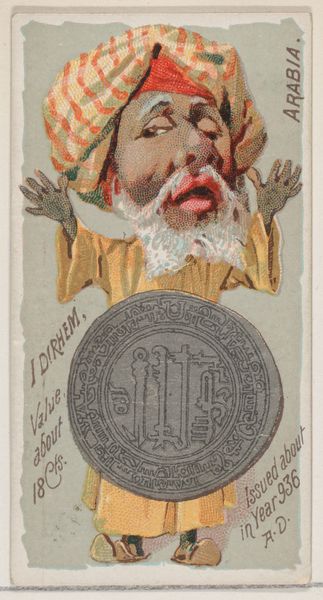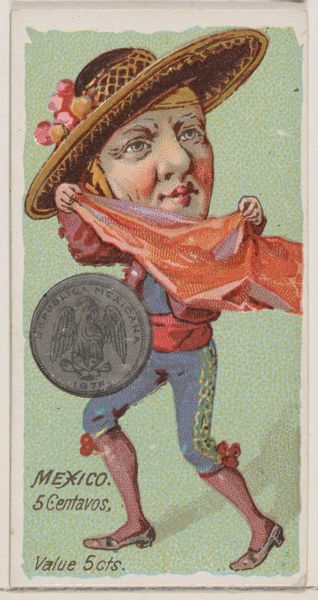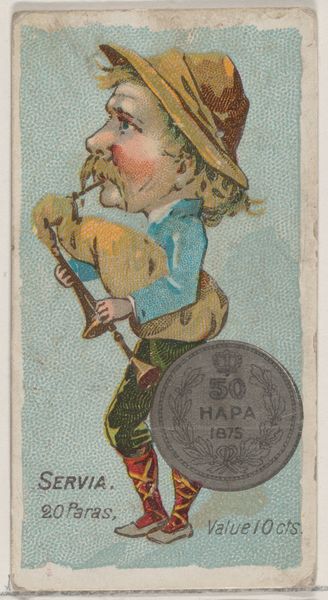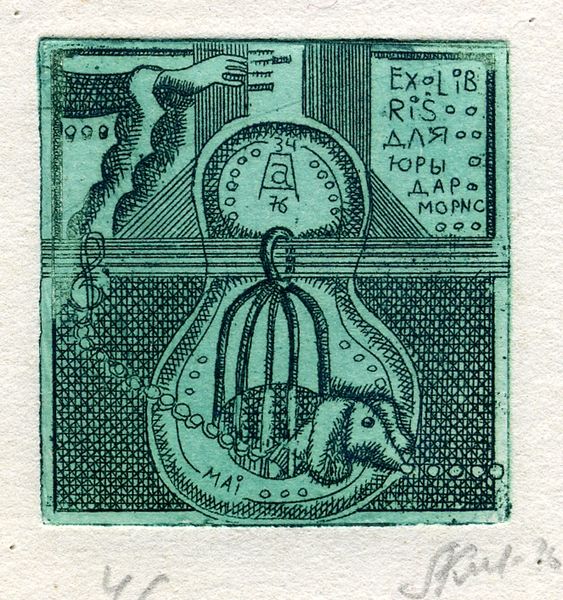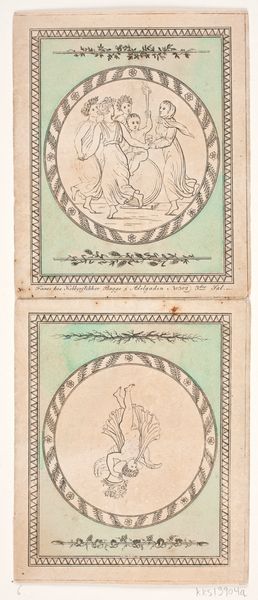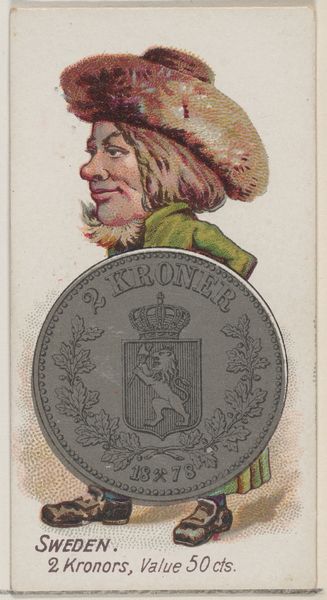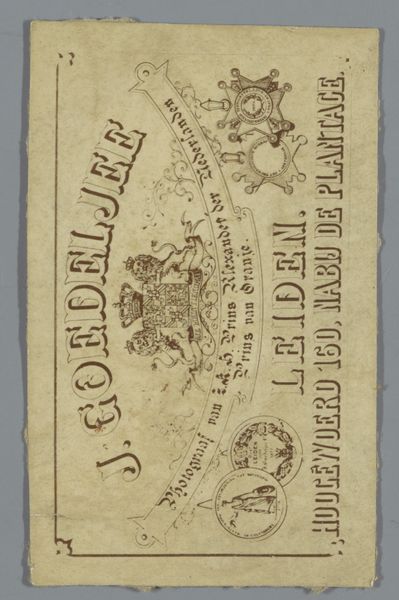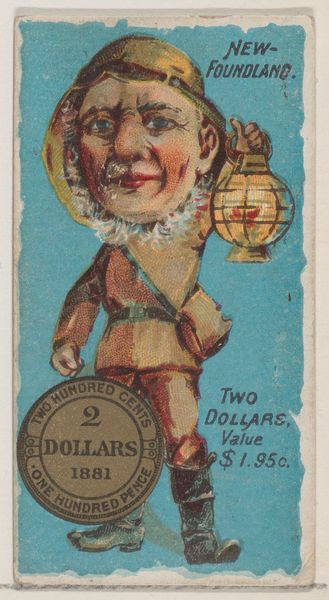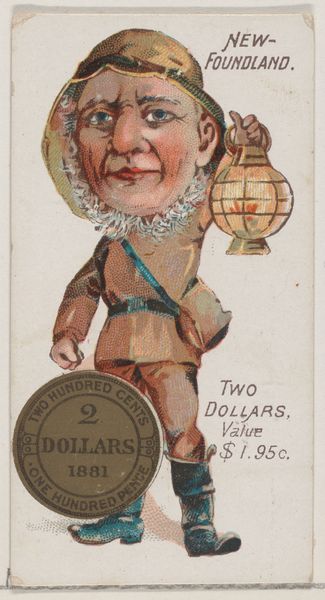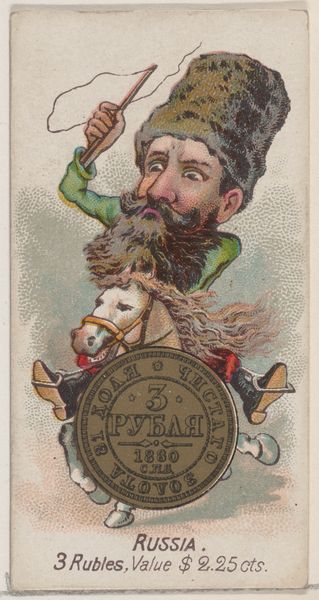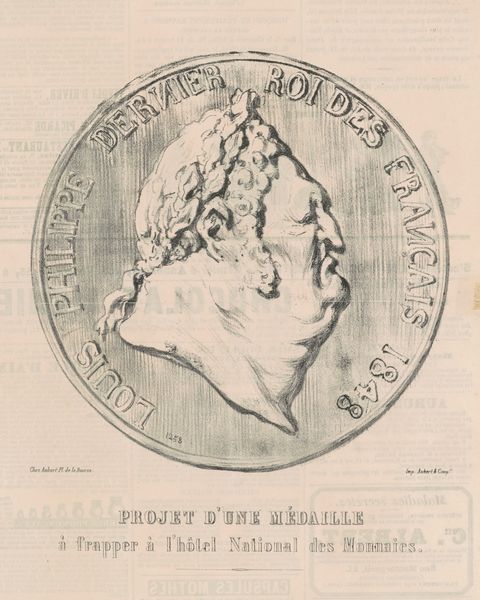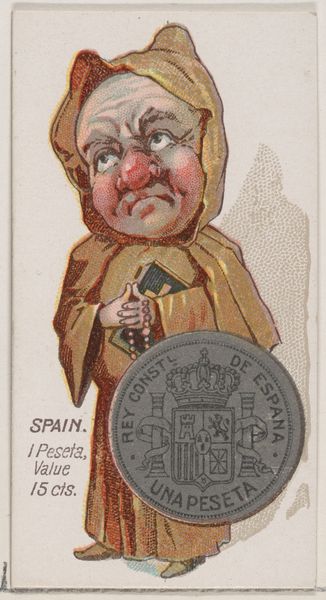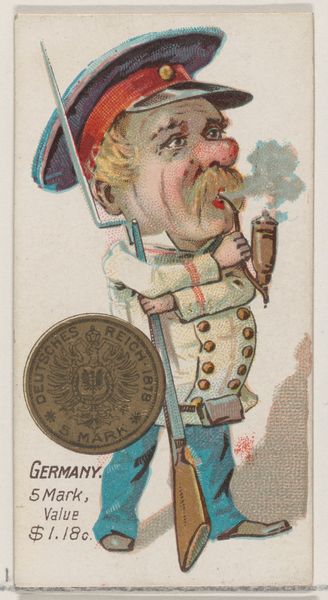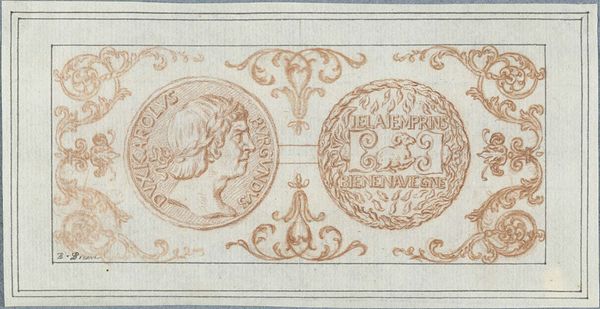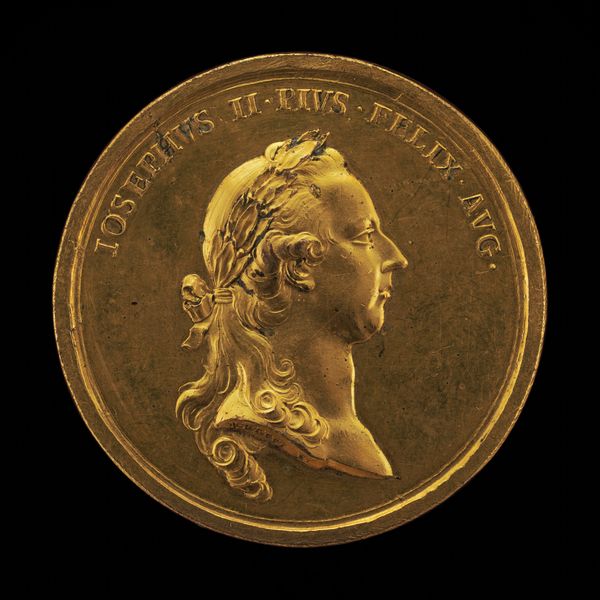
Ecuador, 2 Reals, from the series Coins of All Nations (N72, variation 2) for Duke brand cigarettes 1889
0:00
0:00
drawing, mixed-media, print, poster
#
portrait
#
drawing
#
mixed-media
#
water colours
# print
#
caricature
#
coloured pencil
#
coin
#
poster
#
watercolor
Dimensions: Sheet: 2 3/4 x 1 1/2 in. (7 x 3.8 cm)
Copyright: Public Domain
Curator: Here we have a piece called "Ecuador, 2 Reals" from the series "Coins of All Nations" by W. Duke, Sons & Co., dating back to 1889. It's a mixed-media print—something between a poster and a collectible card, really. Editor: Oh, wow. My first impression is that it has the spirit of old-timey advertisement—equal parts fascinating and unsettling. Curator: Tell me more about that feeling. Editor: It's the caricature, mostly. This grinning miner, with that impossibly large Ecuadorian coin seeming to prop him up, the symbolism here feels rather… complex. Is this reverence or something else? Curator: The series was indeed created to promote Duke brand cigarettes. It offered a whimsical look at currencies from around the globe. But you're right to sense complexity. The coin looms large, obscuring the worker, the backbone of the whole monetary system—all ultimately dwarfed by the looming "Duke." It reminds us to what extent our cultural memory of nations were distilled down to marketing tropes. Editor: And even the choice to depict a coin at all! Coins as potent national symbols – wealth, power, history… they're compressed narratives ready to be spun for consumerism. You’ve got the eagle, the mountain range and boat; a microcosm for Ecuador. Curator: It really does compress so much! The miner himself, poised on what appears to be a sandy incline, holding a pickaxe – classic symbol of labor, exploitation of the earth. The colours – the pastels, almost aggressively bright, feel like they're sugarcoating something harsher. It's strange seeing it all play out like this. Editor: It also evokes a time capsule that tells a story – a kind of innocence in this commercial, early advertisement. The series as a whole offers little glimpses into how countries perceived and how companies used the iconography of others. It gives me some historical and cultural perspective, I didn't know that I needed to learn more about. Curator: Absolutely, an early type of cultural imperialism. That the artist chose to position labour with country with tobacco does provide a curious glance into our commodity world. It's a fascinating artifact that invites deeper reflection, both of which it provides in very distinct qualities.
Comments
No comments
Be the first to comment and join the conversation on the ultimate creative platform.
